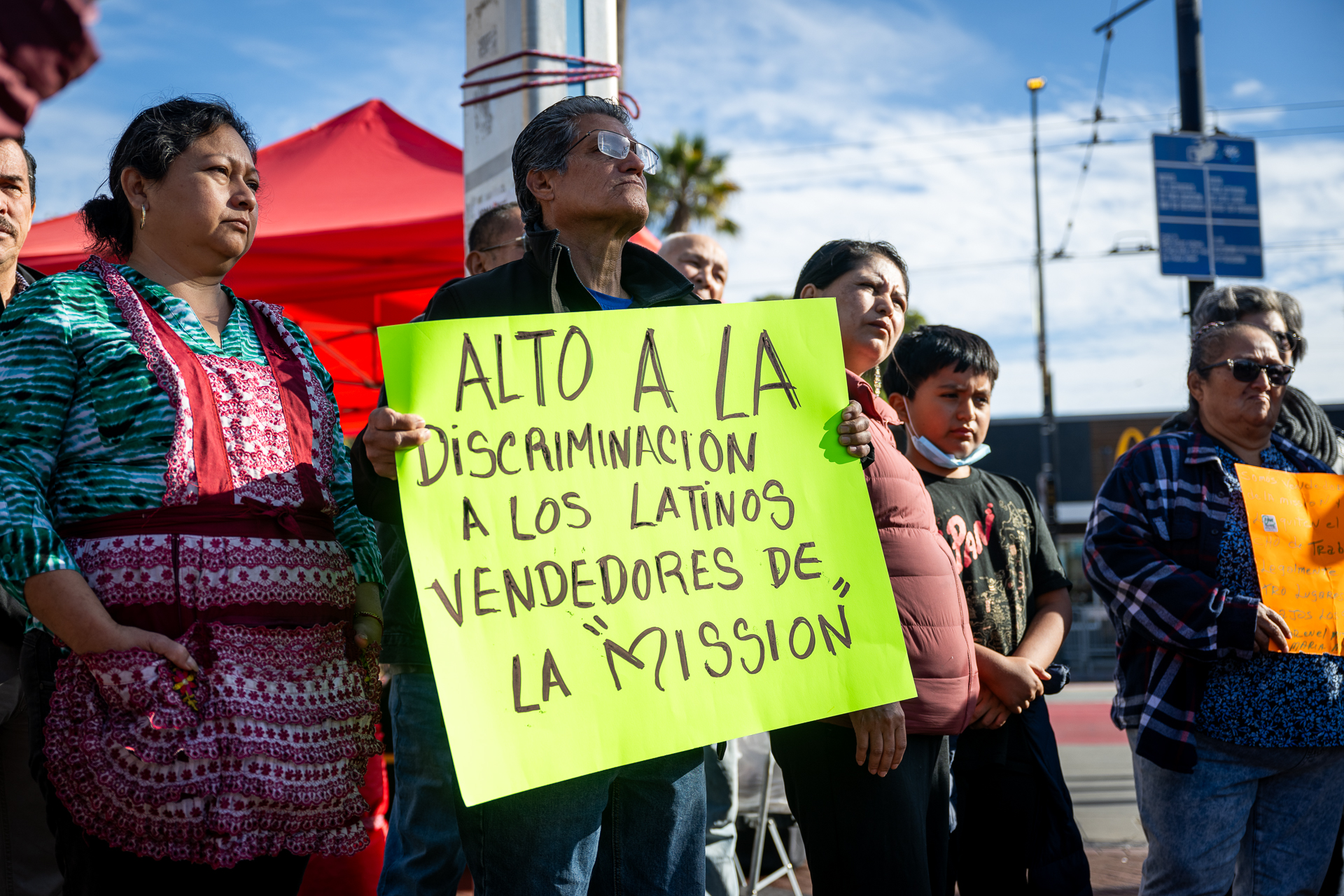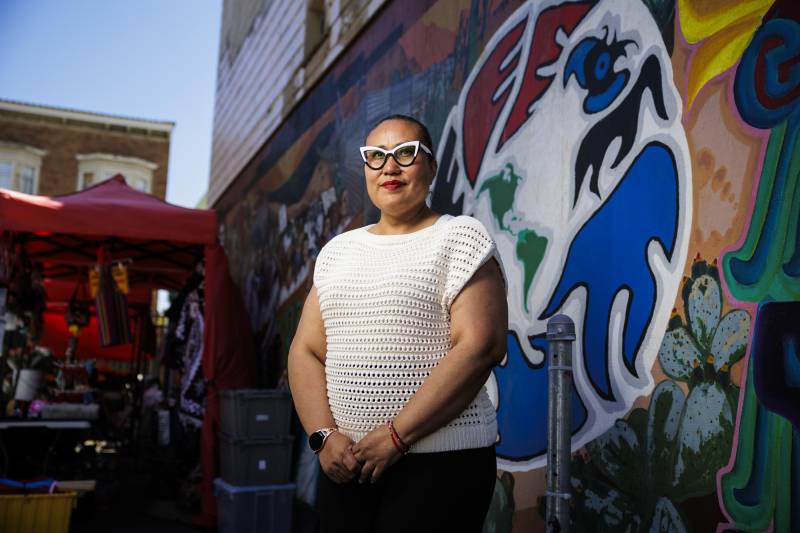Calle 24 was criticized for keeping Jon Jacobo, who has faced allegations of rape and abusive behavior from multiple women, on its board. Jacobo, who resigned in April, was first publicly accused of rape in August 2021, according to reporting by Mission Local. Rojas declined to comment on Jacobo, as the San Francisco Democratic Party confronts sexual assault and harassment in local politics.
When I first met Rojas last year, I questioned how a Colombian immigrant is running the influential Calle 24. The Mission is known as San Francisco’s Latino neighborhood, but the culture has been steeped in Mexican and Central American heritage for generations.
For Rojas, leaning into her Latinidad was a lifeline. She spent the early part of her life in Colombia before immigrating to New York City as a child.
Thirty years ago, she came to San Francisco for the first time to visit her older sister, who lived in the Mission. Rojas was 20, pregnant and engaged to a man she said was abusive. During the trip, he left a threatening voicemail on her sister’s answering machine. It was clear she needed to leave New York for her safety. A few months after her daughter was born, she moved to the Mission with $200 in her pocket.
She felt like she belonged.
“The Colombianness wasn’t there, but the Latin — that was there,” said Rojas, 51, who attended City College before building a career running programs for service organizations, including Mission Neighborhood Centers and the Boys and Girls Club of San Francisco. “You’re walking down the street and you’re hearing the music, you’re hearing your language, you’re smelling that delicious food and you just feel at home.”
For Rojas, the feeling of home doesn’t mean that a place replicates how or where you grew up. Home is a place that provides connection, comfort and belonging.
The Mission is still a hub for recent immigrants to find community and familiarity, but it’s also a neighborhood where skyrocketing rents and home prices have displaced thousands of former residents, Rojas among them. She now lives in the Tenderloin.
Rojas remains committed to her work on 24th Street, what she calls the heart of the Mission with its tree-lined streets, Victorian homes and low building heights that create a more intimate feeling than Mission Street.
When I think of 24th Street, I recall visiting Casa Lucas to stock up on Mexican produce when my mom was in town, La Reyna Bakery & Coffee Shop that made conchas for my wedding and shopping at Medicine for Nightmares, one of my favorite bookstores. Another destination for me was the original Philz Coffee, which closed last year.
Neighborhoods change over time. Residents and businesses inevitably come and go, but the feeling of home can remain — as long as people like Rojas fight for it. But in order to keep going, Rojas said she needs to recoup funding from the city and secure money from other sources.
“We’re fighting for the soul of what makes San Francisco the city that [it] is — the city where dreamers come. The city where artists want to be. The city where people with hopes are coming,” she said. “What makes this city great is at stake. And I’m excited to be part of the resistance.”
This story was reported for K Onda KQED, a monthly newsletter focused on the Bay Area’s Latinx community. Click here to subscribe.


